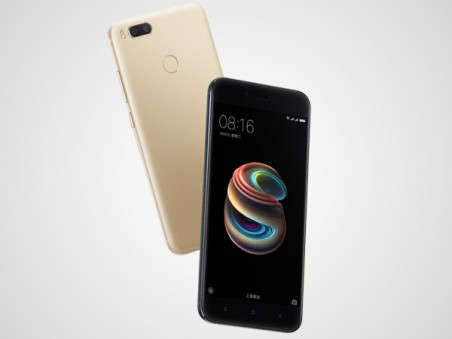Xiaomi Mi A1 : Dual-Lens Camera and Stock Android
Until now Xiaomi and stock android were things that remained far from each other. While stock android had its own base of followers, Mi also thrived on an ecstatic community that loves MIUI. Therefore, both of them didn’t bother to think about each other.

That, however, changed recently when Google revived its Android One program in India in a partnership with this widely popular Chinese smartphone maker. Xiaomi Mi A1, which is company’s first stock Android device ever (and also its first dual camera device in India), is not necessarily a cheap android smartphone – it’s a mid-range device priced at 14,999 INR.
However, at that price it comes with some features that are head-turners. Not only it’s a dual-camera device but also a very nicely built one. But it also has some serious shortcomings associated with it. Here we’ll try to take a look on all those pros and cons of Xiaomi Mi A1 to determine whether it’s worth buying or not. Let’s begin:
Xiaomi Mi A1 Specs
Before we begin going into the details of advantages and limitations of this phone, let’s first take a quick look on its specs. Xiaomi Mi A1 comes with a Snapdragon 625 octa-core processor, 4GB RAM, 5.5-inch Full HD display, 12mp dual-lens primary camera, 5mp secondary camera and rear-facing fingerprint sensor. And of course, Android 7.1 Nougat OS with stock Android experience.
Now let’s move on to the detailed analysis of pros and cons.
Xiaomi Mi A1 Pros
First of all let’s analyze the pros of Xiaomi Mi A1:
#1. Solid Performance
With minimal requirement of stock Android, Snapdragon 625 octa-core chipset under the hood and 4GB of RAM Xiaomi has put together a device that’s capable of outperforming most other smartphones available at that price point. The combination of solid hardware with clutter free software gives you an unparalleled experience.
#2. Dual Camera On A Budget
Second immediately visible advantage of Xiaomi Mi A1 is that it brings you the power of dual camera on a budget. The camera configuration in this phone is a 12mp dual-lens configuration, implemented in typical Telephoto-Wide Angle fashion. It’s a good camera capable of taking amazing “bokeh” shots.
#3. Stock Android Experience
Finally, since it has been developed under Google’s Android One program, it comes with clutter-free stock Android experience. For that reason whole experience of using this device remains smooth and lag free, and minimal customization of OS will also help in timely updates. So if you buy this phone now, you won’t have to wait much for Oreo and other future updates.
Xiaomi Mi A1 Cons
Now let’s take a look on some shortcomings of this smartphone:
#1. Camera Struggles Under Low Light
It’s a bit disappointing to see that the dual-lens primary camera of Xiaomi Mi A1 struggles under low and poor lighting conditions. The images taken in such environments turn out to be blurry and lacking in detail. Also there’s no optical/electronic image stabilization technology in the camera.
As a result of these shortcomings, despite being a dual camera device Mi A1 doesn’t set any new photography standards for mid-range smartphones, which is disappointing. It’ll take good shots for you under daylight and other proper lighting conditions, but don’t expect anything more than that.
#2. No Quick Charging Support
Xiaomi Mi A1 comes with a 3,080 mAh battery, but it doesn’t come with Quick Charge support. This is also disappointing because cheaper smartphones from companies more reputed than Xiaomi are available with Quick Charge (i.e. Moto E4 Plus) if one is willing to compromise on the feature of dual-camera (which is not a very impressive dual camera, as I mentioned above).
Conclusion
So the final picture looks something like this:
| Pros | Cons |
| Solid performance | Camera struggles a bit under poor lighting conditions |
| Dual camera on a budget | No OIS/EIS in camera |
| Stock Android experience | No Quick Charging support |
| Timely updates |
As you can see from the information given above, Xiaomi Mi A1 is a GOOD smartphone that could’ve been GREAT. Does Combination of Dual-Lens Camera and Stock Android Work? The answer is part yes and part no. Buy it for its smooth performance and stock Android experience, but if you’re thinking of buying it for its dual-camera, think again.